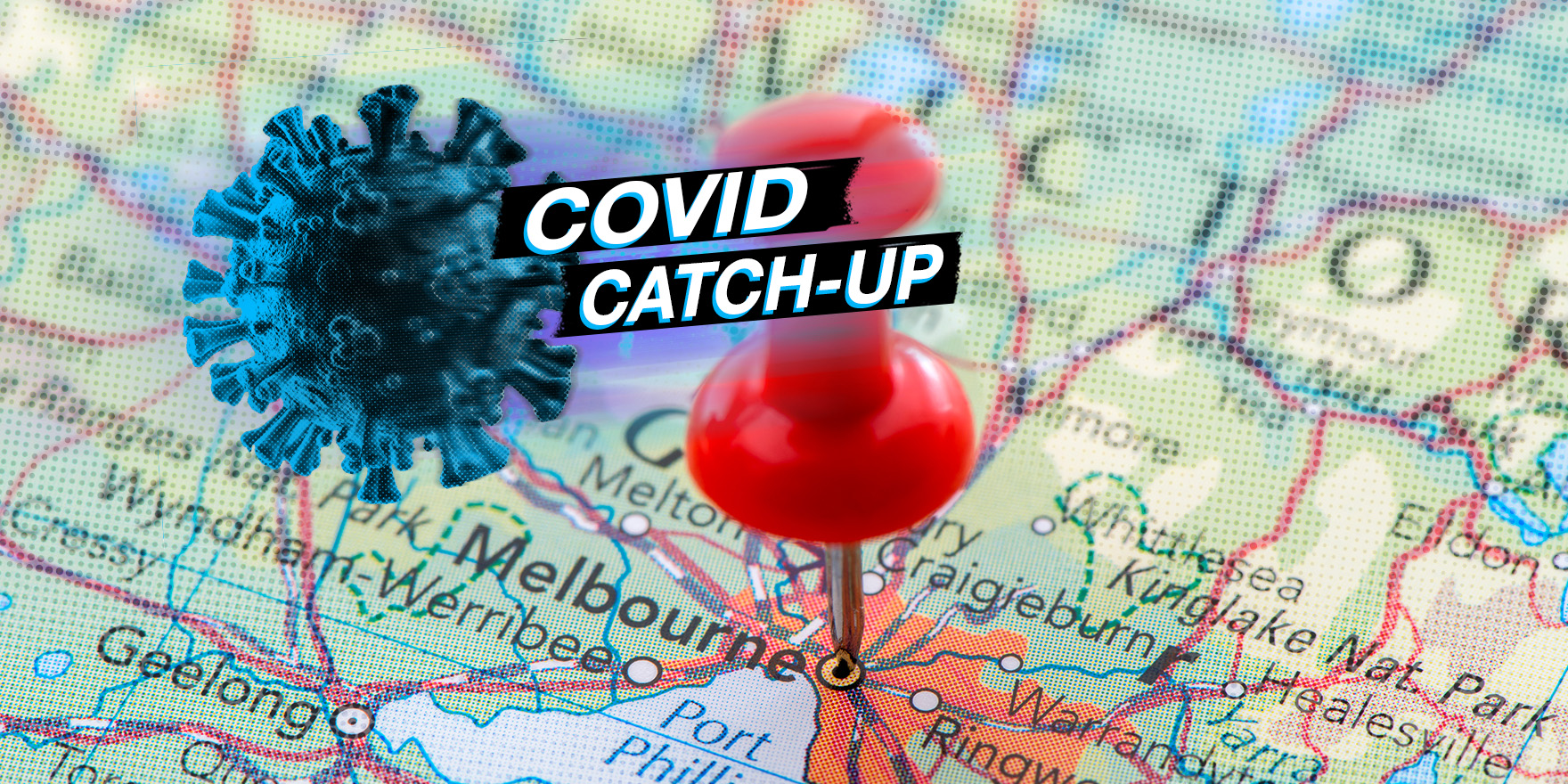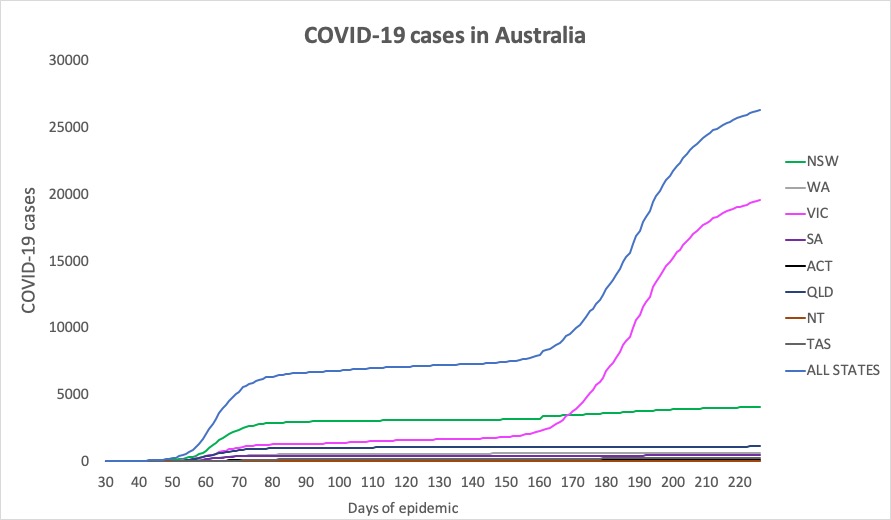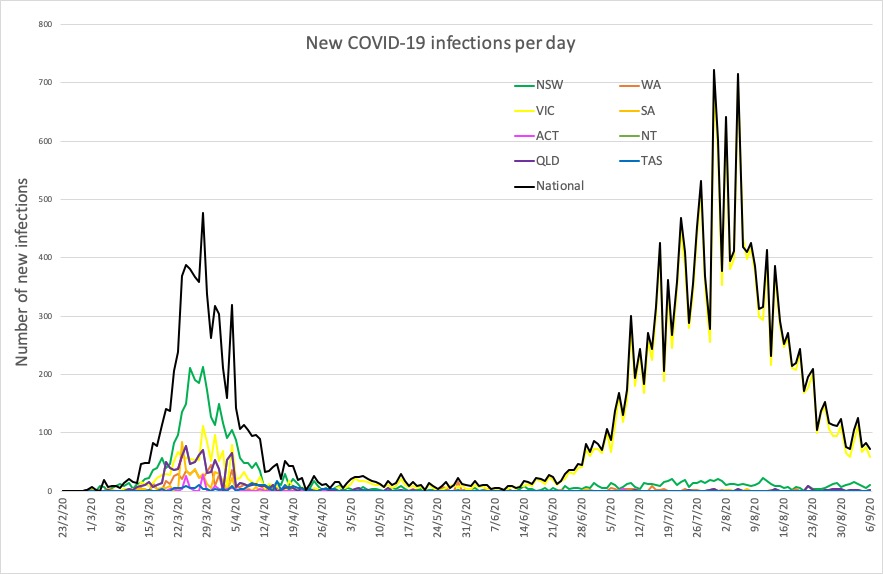A metropolitan area that records an average of 10 or more locally acquired cases of COVID-19 per day for three or more consecutive days will be considered as a potential COVID-19 hotspot under the new ‘hotspot’ model, PM says.
Welcome to The Medical Republic‘s COVID Catch-Up.
It’s the day’s COVID-19 news into one convenient post. Email bianca@biancanogrady.com with any tips, comments or feedback.
7 September
- Ten COVID-19 cases a day over three consecutive days in a metro area will trigger hotspot discussions, PM says.
- RACGP issues guide for managing mild COVID-19 at home.
- Russian COVID-19 vaccine shows immunogenicity with no serious safety concerns.
- One in seven children with COVID-19 test positive more than 30 days after first test.
- Latest confirmed COVID-19 infection figures from around Australia.
- A metropolitan area that records an average of 10 or more locally acquired cases of COVID-19 per day over three consecutive days will be considered as a potential COVID-19 hotspot under the new ‘hotspot’ model for the next phase of Australia’s response to the pandemic.
After a waffly press conference on Friday following the National Cabinet meeting, Prime Minister Scott Morrison has now released further details on the hotspot model, which has been agreed to by all states and territories except Western Australia.
The regional definition of a hotspot is an average of three locally acquired cases per day over three consecutive days, according to the PM’s statement. Once a hotspot has been identified, this is intended to trigger further analysis and a discussion between the Chief Medical Officer and that state or territory’s Chief Health Officer. The PM’s statement doesn’t clarify what happens after that point.
He also noted that the National Cabinet is aiming for a suppression strategy – not elimination – that achieves zero community transmission.
Meanwhile, Victorian premier Dan Andrews outlined the state’s new roadmap towards ‘Covid Normal’. While the current lockdown will remain in place until September 28 at least, metropolitan Victorians can now exercise for two hours a day instead of one and with one other person or a family member, curfew is pushed back one hour to 9pm, and people living alone or single parents can nominate one other person who can visit their home.
Regional Victoria is moving to the second step of the roadmap, which means from 14 September up to five people from two households will be able to get together in outdoor public places such as parks and beaches, outdoor pools and playgrounds will be open, and religious services can be conducted outdoors for up to five people plus the ‘faith leader’. There’s also a plan for a staged return to onsite learning for students from term four. - The RACGP has put out a guide for patients managing mild COVID-19 at home, which includes an action plan, symptom diary, and guidance on assessing a patients’ suitability for home care.
- A Russian COVID-19 vaccine has achieved significantly higher SARS-CoV-2 antibody levels than are seen in convalescent plasma, with similar levels of neutralising antibodies, and only mild or moderate adverse events.
Two phase 1/2 studies, the result of which were published in The Lancet, each involved 38 healthy volunteers who were administered one of two candidate vaccines, either single dose or two consecutive doses.
The vaccine was associated with significant immune responses in 100% of participants
There were no severe adverse reactions, and the most common reactions were injection site pain, headache, fatigue and mild fever. - A study of children with COVID-19 has found nearly one in seven are still testing positive for SARS-CoV-2 30 days after their first positive test.
The retrospective cohort study, published in the Journal of Pediatrics, examined viral clearance and antibody production in 6369 patients who underwent PCR testing and 215 patients who underwent antibody testing for COVID-19.
The median time from viral positivity on RT-PCR to negative test was 25 days, with girls aged 6-15 years taking longer to clear the virus than those aged over 15 years.
The median time from positivity on RT-PCR to detection of antibodies was 18 days, however the authors commented that around half of patients didn’t achieve potentially neutralising levels of antibodies during the timeframe of the study. - Here are today’s confirmed COVID-19 infection numbers from around Australia, to 9pm Sunday:
National – 26,279, with 753 deaths
ACT – 113 (0)
NSW – 4114 (10)
NT – 33 (0)
QLD – 1131 (2)
SA – 464 (0)
TAS – 230 (0)
VIC – 19,539 (63)
WA – 656 (1)




